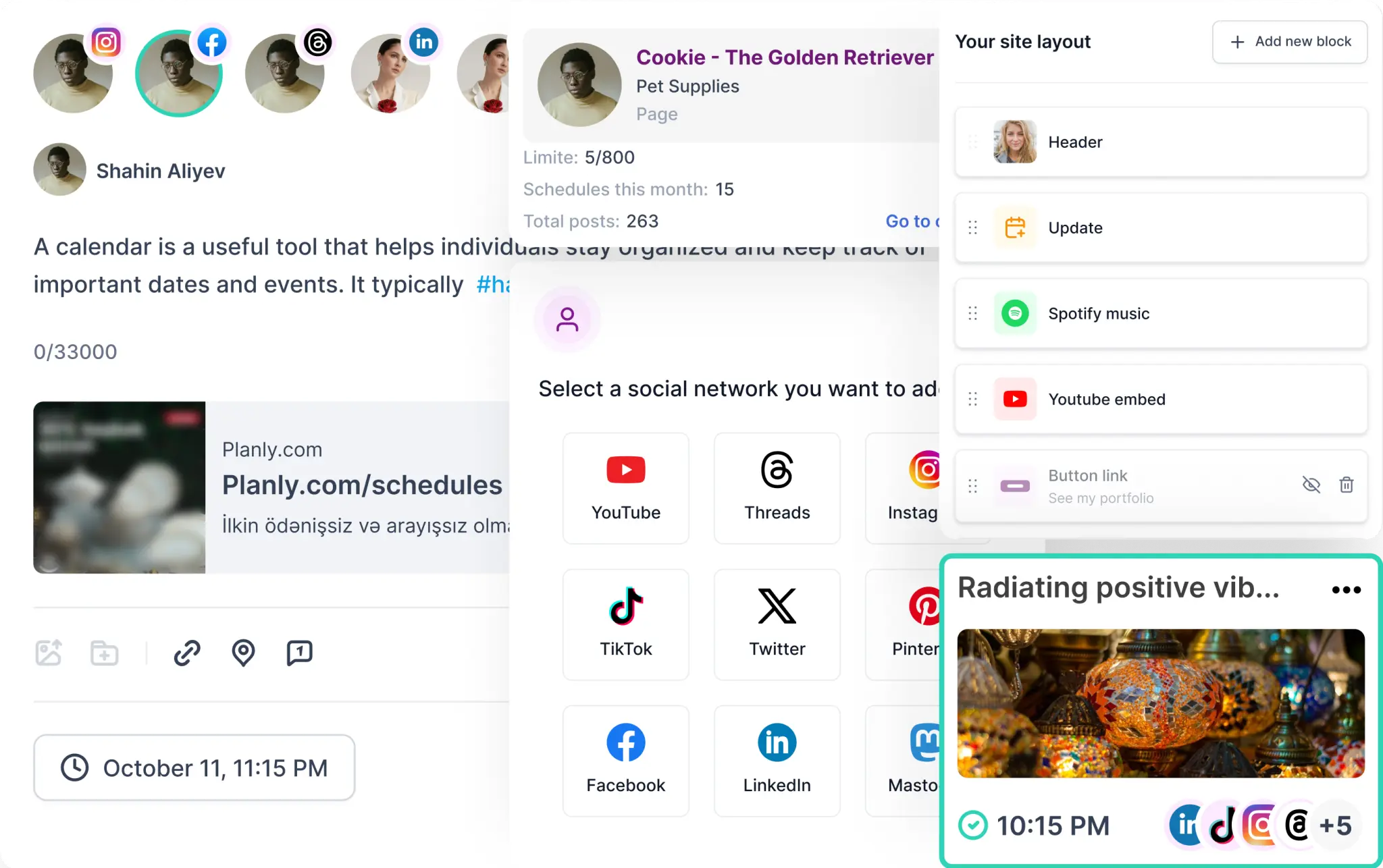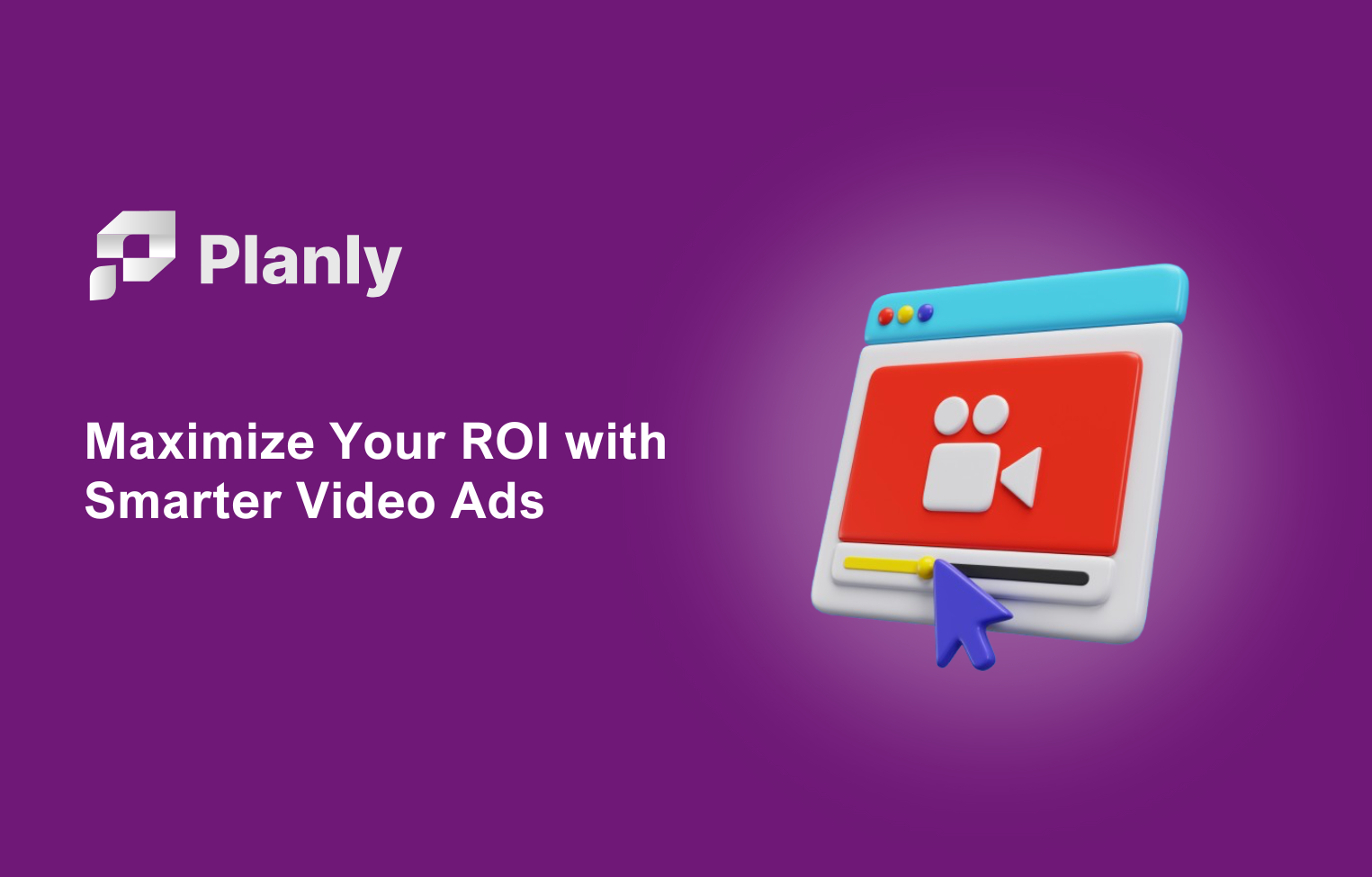"How to measure social media performance?" is a question that every e-commerce business owner should ask themselves. Social media can be a powerful tool for driving traffic and sales, but it can also save time and resources if used effectively.
Measuring social media is crucial to understanding which campaigns are working and which are not. In this blog post, we will dive into the different metrics to measure social media success and provide insights into measuring social media for e-commerce. Whether you're a new business owner or a seasoned pro, this post will help you optimize your social media strategy and achieve your business goals.
Key Metrics to Measure Social Media Performance for Ecommerce
Measuring how to measure social media performance for ecommerce requires analyzing a variety of key metrics and conducting performance testing.

Also, to learn social media performance for ecommerce sales, you need to know how to calculate these metrics. Here are some of the best metrics to track for how to measure social media performance:
Traffic Metric
These include the number of visitors to your website from the right social media platforms, bounce rates, and average engagement time on your site. These metrics help you understand the effectiveness of your social media marketing campaigns in driving traffic to your ecommerce site.
Conversion rate optimization
This is the ratio of the number of visitors who make an online purchase to the total number of visitors to your site. By tracking conversion rates, you can measure how to measure the social media performance metric of your social media advertising and content marketing in generating online sales.
Online engagement
This metric measures your audience's social media engagement and impact measurement with your brand. It includes likes, shares, comments, and mentions. Tracking online engagement helps understand how to measure the social media performance of your social media content's impact and identify improvement opportunities.
Social media ROI
The returns on investment from your social media campaigns. It involves analyzing how to social media ROI measurement performance generated from advertising and content marketing against the costs incurred.
But how to calculate social media ROI? Here is how:
To calculate social media ROI (Return on Investment), you need to determine the financial return of your social media efforts compared to the amount of money invested. Here are some steps to help you calculate social media ROI:
- Identify the costs of your social media marketing: Start by identifying all the costs associated with your social media marketing efforts, including paid advertising, social media management tools, staff salaries, and content creation costs.
- Determine the financial return from social media: This step involves measuring the financial returns generated by your social media marketing efforts, such as leads generated, sales made, and customer acquisition costs.
- Calculate social media ROI: To calculate your social media ROI, subtract the cost of your social media marketing efforts from the financial return, then divide that number by the cost of your social media marketing efforts.
Here's the formula:
(Social Media Financial Return - Social Media Marketing Costs) / Social Media Marketing Costs x 100 = Social Media ROI
For example, if your social media marketing generated $10,000 in sales and cost you $2,000 in advertising, your social media ROI would be:
($10,000 - $2,000) / $2,000 x 100 = 400%
This means that for every dollar invested in social media marketing, you earned a $4 return.
Influencer marketing
This metric measures the impact of how to measure social media performance campaigns on your social media performance. It involves analyzing the number of followers, reaches, and engagement of influencers you collaborate with.
Let's say you are an e-commerce business that sells skincare products. You collaborate with an influencer with a large following in the beauty and skincare niche to promote your brand on Instagram. You agree to pay the influencer $1,000 for creating and posting an Instagram post showcasing your products.
To measure the impact of your influencer marketing campaign, you track the following metrics:
Reach
The influencer's Instagram post receives 50,000 impressions, which means that 50,000 people have seen the post.
Engagement
The post receives 2,000 likes, 500 comments, and 250 shares, indicating that the content resonates well with the influencer's audience.
Conversions
Your e-commerce store receives 100 new orders within a week of the influencer's post, generating $5,000 in revenue.
Cost per Engagement (CPE)
By dividing the total campaign cost ($1,000) by the number of engagements (2,750), you can calculate the CPE of $0.36 per engagement.
Return on Investment (ROI)
To calculate the ROI, you subtract the cost of the campaign ($1,000) from the revenue generated ($5,000), which gives you a profit of $4,000. Then, you divide the profit by the campaign cost ($1,000) and multiply by 100 to get the ROI percentage, which is 400%.
Based on these metrics, you can see that your influencer marketing campaign successfully generated a high level of engagement and drove new sales for your e-commerce business. The ROI of 400% also indicates that the campaign was profitable and provides a good return on your investment.
Online reputation management
The impact of your how-to-measure social media performance campaigns on your online reputation. It involves analyzing the sentiment of social media mentions and reviews of your brand.
Measuring social media is crucial for online reputation management. It helps track and analyze various metrics to understand the impact of social media campaigns on a brand's reputation.
To measure online reputation management, you need to track metrics like sentiment analysis, volume, engagement, response rate and time, the share of voice, and net promoter score.
Sentiment analysis
Analyze the sentiment of social media mentions and reviews of your brand to understand how customers perceive your brand. You can use sentiment analysis tools to classify mentions automatically as positive, negative, or neutral.
Volume
Track the volume of social media mentions and reviews of your brand to understand how often your brand is being talked about online. You can use social media listening tools to monitor brand mentions across various social media platforms.
Engagement
Track the engagement level of social media mentions and reviews of your brand to understand how customers interact with your brand. Engagement metrics can include likes, shares, comments, and retweets.
Response rate and time
Track how quickly and effectively your brand responds to customer queries, complaints, and feedback on social media.
Share of voice
Compare your brand's online presence with your competitors by analyzing the share of voice metric. Share of voice measures the percentage of online mentions your brand receives compared to your competitors.
Net promoter score
Measure the loyalty of your customers by using the net promoter score (NPS) metric. NPS is calculated by asking customers how likely they are to recommend your brand to others on a scale of 0-10.
By tracking these metrics, you can gain insights into how your social media campaigns impact your brand's online reputation and identify opportunities for improvement.
Customer Acquisition Costs (CAC)
The cost of acquiring a new customer through how to measure social media performance marketing campaigns. It involves analyzing the costs of advertising, content creation, and influencer marketing.
Social media customer acquisition costs (CAC) measurement is essential to track a business's customer acquisition costs (CAC). To measure CAC, you need to identify the costs associated with acquiring customers through social media marketing campaigns. Here are some metrics that can help measure CAC:
Advertising costs
This metric includes the expenses incurred on paid social media advertising, such as paid promotions, sponsored posts, and boosted content.
Content creation costs
The costs of creating and publishing social media content, such as images, videos, and blog posts.
Influencer marketing costs
The costs incurred in collaborating with influencers on social media to promote your brand or products.
To measure CAC, you need to add up these costs and divide them by the total number of customers acquired through social media marketing.
Businesses can identify the most cost-effective customer acquisition channels by measuring social media CAC and optimizing their marketing strategy for better ROI.
Click-through Rates (CTR)
The number of clicks on your how to measure social media performance ads or content with the total number of impressions. CTR helps in assessing the effectiveness of your social media advertising.
Social media click-through rates (CTR) measurement is essential to determine the effectiveness of your social media campaigns. CTR is the percentage of clicks a particular link receives about the number of impressions it has generated. The following steps outline how to measure CTR on social media:
Identify the link you want to measure
You need to identify the link you want to track on social media. This could be a link to your website, a landing page, or a product page.
Use a URL shortener
To track the performance of your link, you should use a URL shortener like Bitly or Google URL Shortener. These tools allow you to track the number of clicks your link receives.
Track link clicks
Most social media platforms, such as Facebook and Twitter, have built-in analytics tools to track link clicks.
Calculate CTR
To calculate CTR, divide the number of clicks by the number of impressions and multiply by 100.
Monitor and adjust
Measuring CTR is an ongoing process that requires constant monitoring and adjustment. Use the data to identify trends and adjust your social media strategy to improve your CTR.
In conclusion, measuring CTR is crucial for measuring the effectiveness of your social media campaigns. Using URL shorteners and built-in analytics tools, you can easily track the performance of your links and make data-driven decisions to optimize your social media strategy.
Return on Advertising Spend (ROAS)
The revenue generated from social media advertising is against the cost of advertising. ROAS helps in optimizing social media advertising campaigns.
Measuring Return on Advertising Spend (ROAS) on social media is essential to determine the effectiveness of your advertising campaigns. ROAS is the amount of revenue generated from each dollar spent on advertising. The following steps outline how to measure ROAS on social media:
Set up conversion tracking
To measure ROAS on social media, you need to set up conversion tracking. This involves placing a tracking pixel on your website that tracks when someone completes a desired action, such as purchasing or filling out a lead form.
Determine the revenue generated
You need to determine the revenue generated from your advertising campaign. This involves tracking the number of sales or leads generated from your social media ads and the revenue generated from those sales or leads.
Calculate the ROAS
To calculate the ROAS, divide the revenue generated by the advertising campaign cost and multiply by 100.
Monitor and adjust
Measuring ROAS is an ongoing process that requires constant monitoring and adjustment. Use the data to identify trends and adjust your social media advertising strategy to improve your ROAS.
Measuring ROAS is crucial for measuring the effectiveness of your social media advertising campaigns. By setting up conversion tracking and calculating your ROAS, you can easily track the revenue generated from your advertising campaigns and make data-driven decisions to optimize your social media advertising strategy.
Overall, measuring social media performance for ecommerce requires data analysis and tracking of key performance indicators (KPIs). Ecommerce tracking social media analytics tools can help gather and analyze these metrics, allowing you to make data-driven decisions and optimize your effective measurement strategies for social media.
Tools to Measure Social Media Performance for Ecommerce
Measuring social media performance is crucial for eCommerce businesses because it helps them understand how their social media activities contribute to their business goals. Here are some reasons why businesses use tools to measure social media performance:
- To track key performance indicators (KPIs): Social media tools help eCommerce businesses track their KPIs, such as engagement rates, conversion rates, traffic, and sales. This allows them to see what’s working and what’s not and adjust their social media strategies accordingly. When we set social media KPIs for ecommerce success, we can use tools that will make our work easier to achieve this goal.
- To monitor social media conversations: Social media monitoring tools allow businesses to track what people say about their brand on social media. This can help them identify customer pain points and promptly respond to customer queries and complaints.
- To analyze competitors: eCommerce businesses can use social media tools to monitor their competitors' social media activities, analyze their strategies, and identify potential opportunities for improvement.
- To save time: Social media tools automate time-consuming tasks such as scheduling posts, monitoring conversations, and analyzing data. This frees up time for businesses to focus on other essential aspects of their eCommerce business.
- To improve ROI: ECommerce businesses can identify which social media platforms and activities generate the highest ROI by measuring social media performance. This allows them to focus their efforts on those activities that are driving the most sales and revenue.
Here are some tools for measuring social media performance:
HubSpot Social Media Software
HubSpot's social media software offers comprehensive tools to measure social media performance. With features like social media analytics, monitoring, and scheduling, HubSpot's social media software helps track social media metrics and optimize your social media strategy.
Hootsuite
Hootsuite is another popular social media management tool that offers analytics and monitoring features. With Hootsuite, you can track metrics like engagement, reach, and click-through rates across multiple social media platforms.
Google Analytics
Google Analytics offers a variety of tools to measure social media performance for ecommerce. Integrating Google Analytics with your ecommerce site lets you track traffic metrics, conversion rates, and online sales generated from social media platforms.
These tools help measure social media performance and optimize your social media strategy for ecommerce. You can make data-driven decisions and improve your social media campaigns by tracking metrics like traffic, engagement, and conversion rates. With the right tools and metrics, you can achieve social media success and drive online sales for your ecommerce business.
Bonus: Planly
To measure social media performance, you must share social media content regularly. You should prepare a weekly and monthly social media content calendar for this. You can prepare the post contents of this calendar in advance and schedule them in social media scheduling tools.
We recommend using Planly for this. Because you can schedule posts to Facebook and several social media platforms simultaneously, with Planly's various integrations, your work on social media will become much more manageable.
Then you can find the answer by researching how to measure social media performance.

Best Practices for Measuring Social Media Performance for Ecommerce
Measuring social media performance enables eCommerce businesses to evaluate the effectiveness of their social media strategies. However, using the right metrics and following best practices to get accurate insights is crucial. Here are some best practices for measuring social media performance for eCommerce:
Set SMART goals and objectives
Before measuring social media performance, eCommerce businesses must define their goals and objectives. This could be increasing website traffic, generating leads, or boosting sales. Clear goals help businesses choose the right metrics to measure social media success.
Use the right metrics
eCommerce businesses should use relevant metrics to measure social media success. Some standard metrics include engagement, reach, conversion, and click-through rates. These metrics help businesses understand how social media activities contribute to their business goals.
In the below infographic, you can check the business objectives and social media metrics you should check.
Monitor social media conversations
Monitoring social media conversations and promptly responding to customer queries and complaints is essential. This helps improve customer satisfaction and brand reputation.
Analyze competitors
eCommerce businesses analyze their competitors' social media strategies and identify opportunities for improvement. This helps them stay ahead of the competition and improve their social media performance.
Measure regularly and adjust accordingly
Measuring social media performance should be continuous. eCommerce businesses measure regularly and adjust their social media strategies to optimize performance.
Measuring social media performance is essential for eCommerce businesses to succeed on social media. By following these best practices and using the right metrics and tools, businesses can accurately measure their social media success and optimize their social media strategies to achieve their goals.
Conclusion
In conclusion, measuring social media performance is important for any eCommerce business looking to succeed in today's digital landscape. By using the right metrics to measure social media success, businesses can gain valuable insights into their customers' behaviors and preferences, identify areas for improvement, and optimize their social media strategies to drive better results.
When measuring social media performance, businesses must consider a range of metrics that align with their specific goals and objectives. These metrics may include engagement rates, reach, conversion rates, customer feedback, and more.
Overall, measuring social media performance is a critical aspect of eCommerce success. By doing so, they can drive growth, deepen customer relationships, and achieve tangible business results. You can also benchmark social media performance using our outlined metrics and calculations.









